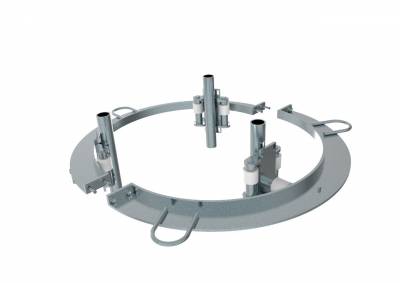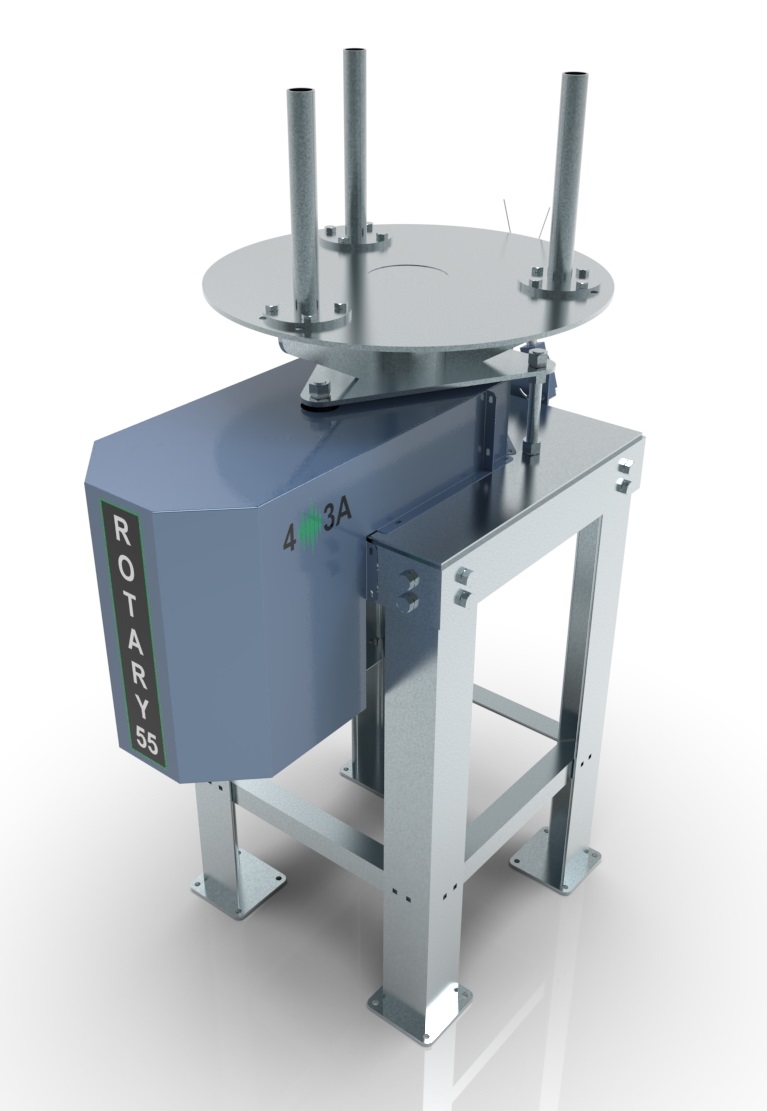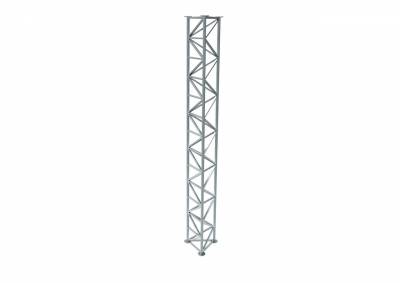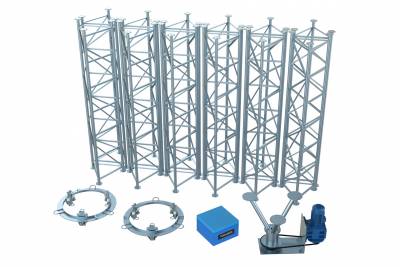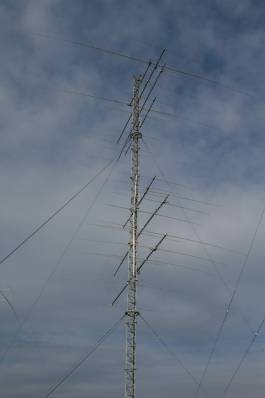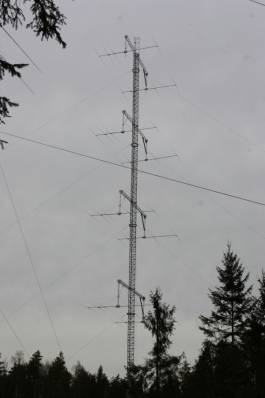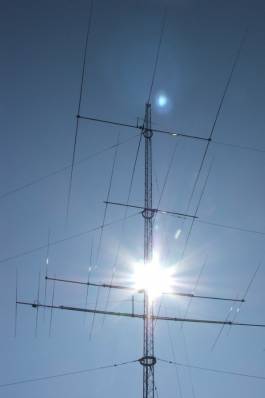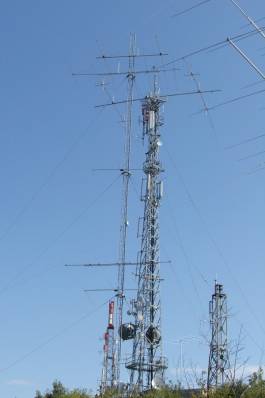Radioamatersko takmičenje CQWW je bez dileme najveći i najprestižniji događaj u našem hobiju. Kroz decenije se takmičenje razvijalo i raslo, ali upravo zbog te veličine i značaja, važno je da ne prestanemo da razmišljamo o njegovom unapređenju.
Kroz ovo otvoreno pismo želim da iznesem nekoliko ključnih predloga, utemeljenih na praktičnim zapažanjima, logici i podacima iz zvaničnih rezultata, koji bi, po mom mišljenju, doprineli zdravijem, pravednijem i širem učešću u CQWW contestu.
1. Dužina trajanja takmičenja – zdravstveni i takmičarski aspekti
Takmičenje trenutno traje 48 sati bez ikakvog ograničenja za učesnike. Ovo pravilo je zastarelo, štetno i kontraproduktivno iz više razloga:
- Zdravstveni rizici: Rad tokom 48 sati bez spavanja, u visokom intenzitetu, pod stalnim pritiskom i maksimalnom koncentracijom, predstavlja ozbiljan medicinski rizik. Kombinacija mentalnog, intelektualnog i fizičkog napora može imati ozbiljne posledice – naročito po starije takmičare, kojih je najviše.
- Narušena ravnopravnost: Samo mali broj pojedinaca može izdržati ovakav tempo. Takmičenje se pretvara u test fizičke izdržljivosti, a ne vještine i tehničke pripreme, što bi trebalo da bude suština radioamaterskog sporta.
- Zloupotrebe: Zbog prevelikog napora, dio takmičara pribjegava nelegalnoj pomoći - uključujući rotaciju operatora, remote podršku i slično, što dodatno narušava integritet takmičenja.
Predlog: Uvesti vremensko ograničenje – npr. maksimalno 36 sati aktivnog rada unutar 48h trajanja takmičenja, uz slobodan izbor termina.
Rezultat? Više ozbiljnih učesnika, ravnopravnije takmičenje, manji broj prekršaja i veća motivacija u zajednici.
2. Sistem bodovanja – nepravedna geografska neravnoteža
Trenutni način bodovanja podrazumijeva:
- 3 poena za DX vezu (između kontinenata)
- 2 poena za veze izmedju Kariba u Sjeverne Amerike
- 1 poen za veze na istom kontinentu
Ova pravila dovode do ogromne prednosti za stanice koje se nalaze na lokacijama sa lakim pristupom drugim kontinentima (npr. Afrika). Operatori iz Evrope, Azije, Sjeverne Amerike, ili južnog dijela Južne Amerike – i pored više veza i boljih rezultata– praktično nemaju šansu za realnu konkurenciju.
Prije predloga, hajde da vidimo neke od najboljih rezultata i da napravimo poredjenje, radi dobijanja realne slike o stvarnoj vrijednosti i težini nekih rezultata, koje sistem bodovanja favorizuje. Znamo da je DX veza (veza sa drugim kontinentom) 3 poena, a svoj kontinent se boduje jedan poen. Uzmimo svjetski rekord u CQWW CW, SOAB HPU, koji je postavljen prošle godine, i uporedimo ga sa drugim najboljim rezultatima, napravljenih iz Kariba i Evrope, a koji imaju drugačije, trenutno vrlo nepravično bodovanje. Ovo je oficijalna tabela i oficijalni rezultati:
CQWW CW – SOABHPU kategorija
Oficijelni rezultati:
|
Red.
|
Stanica
|
QSOs
|
Zone
|
Cty
|
Score
|
|
1
|
D4DX
|
9563
|
171
|
557
|
20,263,880 – World record
|
|
2
|
ZF1A
|
11840
|
169
|
539
|
20,188,620
|
|
3
|
D4C
|
9227
|
165
|
578
|
19,905,713
|
|
4
|
TI7W
|
11224
|
162
|
534
|
18,316,632
|
|
5
|
CR6K
|
10141
|
168
|
549
|
14,345,736
|
Stanice iz Afrike (D4DX, D4C) gotovo sve veze boduju 3 poena. Karipske stanice (ZF1A, TI7W) dobijaju 2 poena za veze sa Sjevernom Amerikom. Evropske stanice, kao što je CR6K, dobijaju samo 1 poen za većinu svojih veza.
Ako ovih 5 rezultata preračunamo na način da ih jednako bodujemo, sa tri poena po svakoj vezi, rezultat i redoslijed je sledeći:
Preračunato sa jednakim bodovanjem (sve veze = 3 poena):
|
Red.
|
Stanica
|
QSOs
|
Zone
|
Cty
|
Score (3p)
|
|
1
|
ZF1A
|
11840
|
169
|
539
|
25,148,160
|
|
2
|
TI7W
|
11224
|
162
|
534
|
23,435,712
|
|
3
|
CR6K
|
10141
|
168
|
549
|
21,813,291
|
|
4
|
D4DX
|
9563
|
171
|
557
|
20,263,880 – World record
|
|
5
|
D4C
|
9227
|
165
|
578
|
19,905,713
|
Zaključak: Najbolje stvarne performanse imaju ZF1A, TI7W i CR6K – ali ih sistem ne prepoznaje jer su „na pogrešnom mjestu“. Brojevi jasno pokazuju da rezultat ne zavisi prvenstveno od vještine, već od lokacije. Jednako bodovanje za sve veze bi izjednačilo šanse i motivisalo velik broj takmičara da grade svoje stanice.
Ovo su bila poredjenja u SOAB kategoriji.
Evo poredjenje u Single OP Single band kategoriji, na 40M, gdje je slika još upečatljivija.
Uporedio sam World rekord i sledeća dva najbolja rezultata svih vremena, sa rezultatima S52AW, i 4O3A, a koji su na listi tek 45 i 77 rezultat, po trenutno važećem načinu bodovanja:
Poređenje – Single OP, Single Band (40m)
Oficijelni rezultati:
|
Red.
|
Stanica
|
QSOs
|
Zone
|
Cty
|
Score
|
|
1
|
CN3A
|
4286
|
36
|
135
|
2156652
|
|
2
|
CN2R
|
3910
|
35
|
141
|
2006576
|
|
3
|
EA8EA
|
3660
|
38
|
137
|
1877050
|
|
45
|
S52AW
|
3703
|
38
|
155
|
1303715
|
|
77
|
4O3A
|
3865
|
35
|
141
|
1186994
|
Preračunato sa 3 poena po vezi:
|
Red.
|
Stanica
|
QSOs
|
Zone
|
Cty
|
Score (3p)
|
|
1
|
CN3A
|
4286
|
36
|
135
|
2156652
|
|
45
|
S52AW
|
3703
|
38
|
155
|
2144037
|
|
77
|
4O3A
|
3865
|
35
|
141
|
2040720
|
|
2
|
CN2R
|
3910
|
35
|
141
|
2006576
|
|
3
|
EA8EA
|
3660
|
38
|
137
|
1877050
|
I ovdje je jasno: realna vrijednost rezultata iz Evrope je drastično potcijenjena. Uz ravnopravan sistem bodovanja, S52AW i 4O3A bi bili konkurentni u samom vrhu.
3. Predlog za novu kategoriju: SO2B – Single Operator, Two Bands
Sledeći važan segment koji direktno utiče na masovnost i ozbiljnost učešća je struktura takmičarskih kategorija.
Trenutno imamo mnogo kategorija, što je dobro, ali postoji prostor za značajno poboljšanje. Posebno bih istakao potrebu za uvođenjem nove kategorije: Single OP – Two Bands (SO2B), o kojoj poslednje dvije godine intenzivno razgovaram sa contest zajednicom.
Zašto SO2B?
Da počnemo od početka.
SOAB kategorija je sigurno najzahtjevnija, i najveći broj nas bi volio da se takmičimo u njoj.
- Da bi stanica bila konkurentna u SOAB, mora imati ozbiljnu infrastrukturu: plac velike površine na pogodnoj lokaciji, sa kućom i infrastrukturom
- Velike stubove, ozbiljne antene za svih 6 opsega, sav hardver za 6 opsega (160–10m).
- Automatizaciju i kompleksan tehnički system
Takve stanice su izuzetno skupe, teško ostvarive, malobrojne i često se takmiče same sa sobom, dok je većina operatora demotivisana, jer se sa prosječno opremljenom stanicom, rezultatima ne može ni približiti najvećim.
Takodje svi znamo odgovor na pitanje, da, ako bi jedan veliki broj dobrih operatora imao tehničke i materijalne mogućnosti i mogao sebi priuštiti takvu stanicu, da bi oni koji danas dominiraju bili i najbolji?
Predlažem kategoriju: SO2B – Single Op, Two Bands, ili jedan operator, dva banda po izboru
Uvodjenjem kategorije SO2B, otklonile bi se prepreke u smislu značajnog smanjenja investicije i ozbiljna SO2B stanica bila bi mnogima dostupnija. Finansijski, i tehnički-prostorno.
Otvorila bi se mogućnost da ogromna većina može da priušti SO2B setup za dva opsega, i da se takmiči u punom kapacitetu.
Odluka o tome koja dva opsega će da radi, je odluka takmičara. Južna amerika, Afrika, i Okeanija bi dobile mogućnost da budu potpuno kompetetivne na dva viša banda. Evropa u Sjeverna amerika kombinaciju viših i nižih bandova, u zavisnosti od propagacija. To bi dodatno otvorilo mnogo novih mogućnosti i značajno doprinjelo broju ozbiljnih takmičara u ovoj kategoriji.
Takodje, SO2B bi zadržao sve one atraktivne elemente SOAB rada, kao što su SO2R i 2BSIQ tehnike. Važno je napomenuti da bi SO2B bila jedna kategorija, bez obzira na to koja dva banda je takmičar odabrao. Time bi se dobili i na atraktivnosti, čak i mnogo više nego što je to SOAB kategorija.
Ključne karakteristike:
- Takmičar bira dva opsega po izboru (npr. 20m + 40m, ili 10m + 15m)
- Sve veze moraju biti na ta dva opsega
- Tehnike poput SO2R i 2BSIQ su dozvoljene
- Nema podkategorija po kombinaciji opsega – svi se takmiče zajedno
Uvođenjem kategorije SO2B:
- Niža tehnička i infrastrukturna barijera za ulazak – mnogo jednostavnije i pristupačnije
- Mogućnost konkurencije bez ogromne stanice
- Fleksibilnost u strategiji – operator bira opsege prema svojoj lokaciji i propagacijama
- Povećanje broja takmičara – više ozbiljnih stanica, jer su investicija i potreban proctor i hardver značajno manji
SO2B bi zadržala sve atraktivne elemente SOAB kategorije – SO2R, 2BSIQ – ali bi takmičenje učinila dostupnijim, zanimljivijim i kompetitivnijim za veći broj operatora.
Zaključak
Moj “dream CQWW” bi uključivao sledeće promjene:
- 36 sati aktivnog rada unutar 48h trajanja takmičenja
- Jednako bodovanje svih veza – 3 poena za svaku
- Nova kategorija SO2B – Single Operator Two Bands
- Live score tokom takmičenja
Ove promjene bi:
- Učinile takmičenje zdravijim
- Učinile takmičenje poštenijim
- Povećale broj ozbiljnih takmičara
- Uklonile geografske privilegije
- Vratile entuzijazam, posebno kod mlađih generacija
Pozivam CQWW komitet da ozbiljno razmotri ove predloge i otvori prostor za modernizaciju pravila. Naš hobi ima ogroman potencijal – hajde da ga zajedno učinimo dostupnijim, zdravijim i uzbudljivijim za sve.
73, Ranko 4O3A
 DX Engineering, a leading worldwide retailer of amateur radio equipment, has been named the exclusive distributor in the U.S. and Canada of the Sky Sat Group’s lineup of 4O3A band pass filters, headsets and communication accessories, and station automation device controllers.
DX Engineering, a leading worldwide retailer of amateur radio equipment, has been named the exclusive distributor in the U.S. and Canada of the Sky Sat Group’s lineup of 4O3A band pass filters, headsets and communication accessories, and station automation device controllers.
